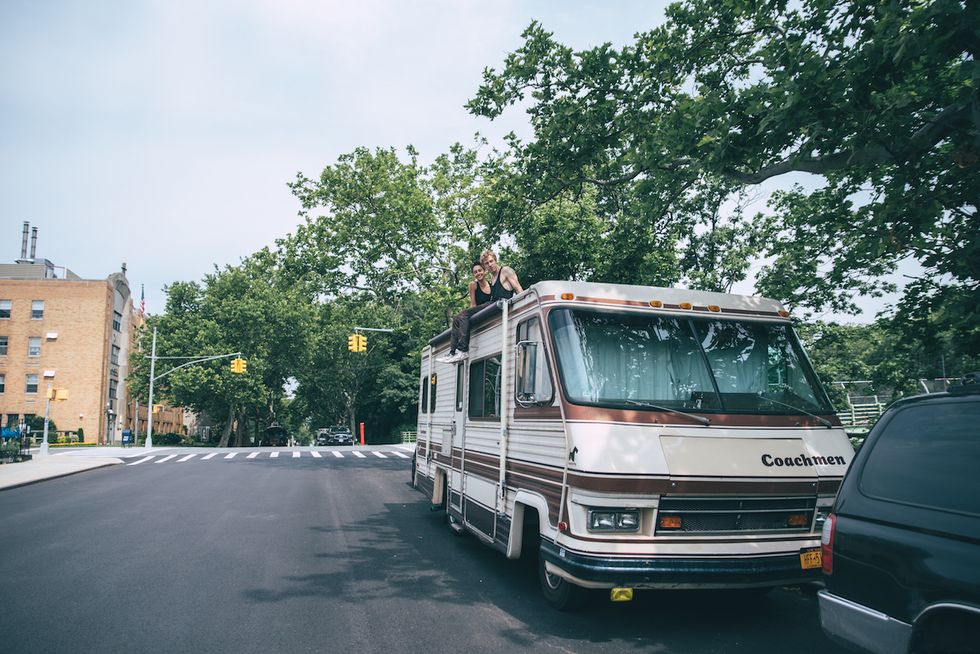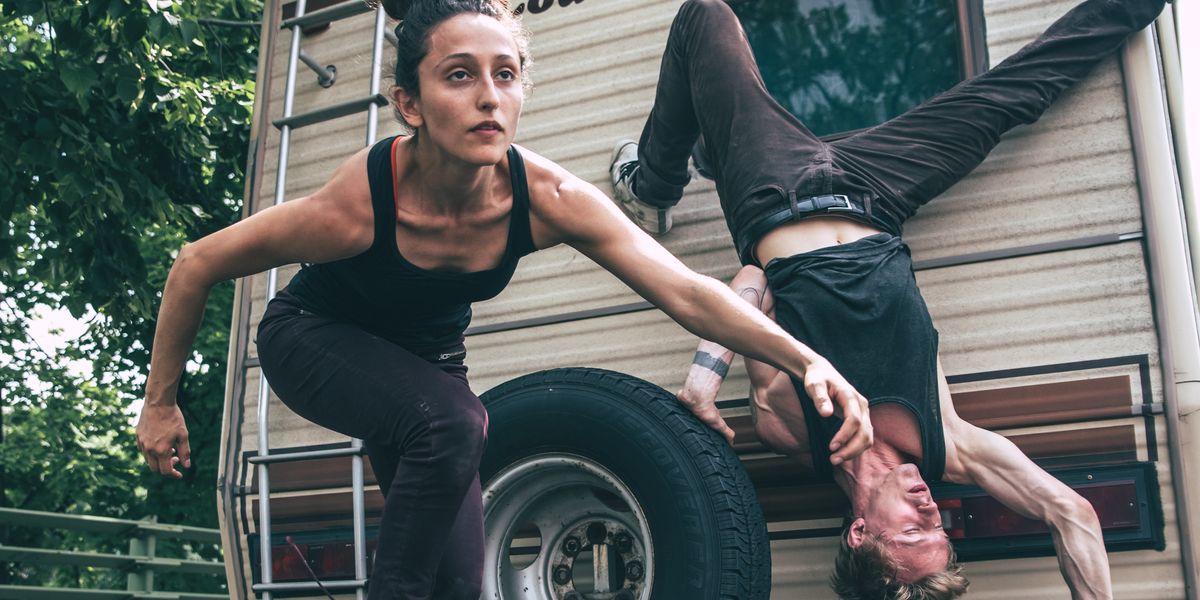#RVLiving: Meet the Dancer–Choreographer Couple Who Lives in an RV
Though living in New York City is expensive, dancers can be downright resourceful in finding creative ways to make it work. Shaina Branfman Baira and Bryan Strimpel Baira have taken that resourcefulness to a whole other level: For the past two years, the co-directors of BAIRA | MVMNT PHLSPHY have lived off the grid. In an RV. Parked in Brooklyn. Without electricity, running water, internet or air conditioning.
Since making this transition, the married couple has been able to support themselves almost entirely through their dance work, freeing up valuable time and resources for their craft. The Bairas shared the ins and outs of their unconventional lifestyle with Dance Magazine and even gave us a tour of their home.
Your browser does not support the video tag.
So You Wanna Move into an RV…
Surprisingly, the Bairas’ move was more about saving time than saving money. “We were working so many jobs to be able to make rent that we didn’t actually have time to really develop our choreography and our teaching practice,” says Shaina. Both had been dancing for other choreographers, while Shaina picked up work video editing and babysitting and Bryan performed with Third Rail Projects and did sound design for other dance companies. They put all that aside upon moving into their 1986 RV. Now, their days are spent researching, choreographing and teaching dance.
Since Shaina is from Texas and Bryan is from Michigan, they also wanted to set themselves up for a more mobile lifestyle. “This allows us to travel more and to bring what we’re doing back to the communities we’re from,” she says. And the socially conscious pair was also concerned about how they were—or weren’t—contributing to their Park Slope neighborhood. “When you move to a city,” says Bryan, “if you don’t plan on fully participating in the decisions that affect the city, I think that’s where the gentrification issues becomes irresponsible.”

Home sweet home. Photo by Effy Grey | Effyography, Courtesy The Bairas.
The Community Connection
Opting out of traditional living actually forced them further into their community out of necessity. “We ended up being so much more immersed because we needed things like electricity and bathrooms,” says Shaina. For internet access, they rediscovered public libraries and became regulars at local coffee shops. They joined a gym, and its facilities had an added bonus: open studios they could use whenever fitness classes weren’t happening. “That became our place to rehearse, our place to shower, our place to train our bodies.”
The couple cooks most meals at home on a three-burner propane stove. But without electricity, their refrigerator is used for storage. They do use ice to keep their food cool, but once it melts, the water is recycled for washing dishes or freshening up.
The Magic Hours
The Bairas must move their RV once or twice a week, depending on parking regulations. During their first year, they often parked in spots that required them to move between midnight and 3 am. “That sucked so bad,” says Bryan, laughing. But, Shaina counters, that late-night time became some of their most productive hours. If their laptop still had juice, they’d work on their website, or use the time to read, write or process their work. “Midnight to 3 am is horrible if you have a 9 am job,” she says, “but we can make our schedules that next day and go into the gym to rehearse at noon.”
“We Are So Broke”
When asked how the move impacted them financially, Bryan was quick to say that they’re now in a different tax bracket. They get by with money from choreography commissions and teaching at Peridance, Gibney and Mark Morris Dance Center, as well as occasional gigs at colleges, like their upcoming intensive at Wayne State University.
“Someone could do this transition and save money. That’s a whole other route we didn’t choose,” says Shaina. “All of our rent money goes into what we want to participate in.” That means buying responsibly sourced food, and funding research for their choreography, whether that’s through books, musical equipment or tickets to dance performances.
Rest-Stop Concerts

Improvising at rest stops became a way for Shaina and Bryan to connect with other travelers. Photo by Effy Grey | Effyography, Courtesy The Bairas.
Since moving into an RV, the Bairas have taken two cross country roundtrips and met countless people through improvisational performances at parks or rest stops. “It’s pretty renegade style,” says Shaina. “These people definitely wouldn’t find themselves in the Triskelion theater in Brooklyn where we perform,” says Bryan. “Truck drivers, people that didn’t have an idea of what dance could be,” she says. “Performing would be the catalyst for the conversations,” says Bryan. “They’d been watching for so long that they feel obligated to talk to us, like ‘What are you guys doing?’ ”
Next Stop: Detroit
The Bairas are about to get even more mobile: Later this month, they’re hitting the road and relocating to Detroit. At first, they’ll stay with friends. “Before we go into RV living, we need to understand Detroit more and how we can responsibly live there off the grid,” says Shaina. But they’re not quitting the NYC dance scene. They’ll return to perform and teach and hope to travel the rest of the time. “We want to bring what we’re working on to our families,” says Bryan. “If we can’t reach them, then what are we really doing? That’s a big goal, a big driver. Who are we making our art for? Other artists, or is it attempting to communicate with all people?”
This sort of arts evangelism is a big theme for the Bairas, and RV living has only amplified it. Shaina hopes that other dancers who flock to NYC can eventually bring their creativity back to their hometowns. “We leave home and come to cities to find each other, our artistic families,” she says. “But then there’s a big problem because our homes are missing the artistic pieces. If we could all go home, we would live in a different country.”




